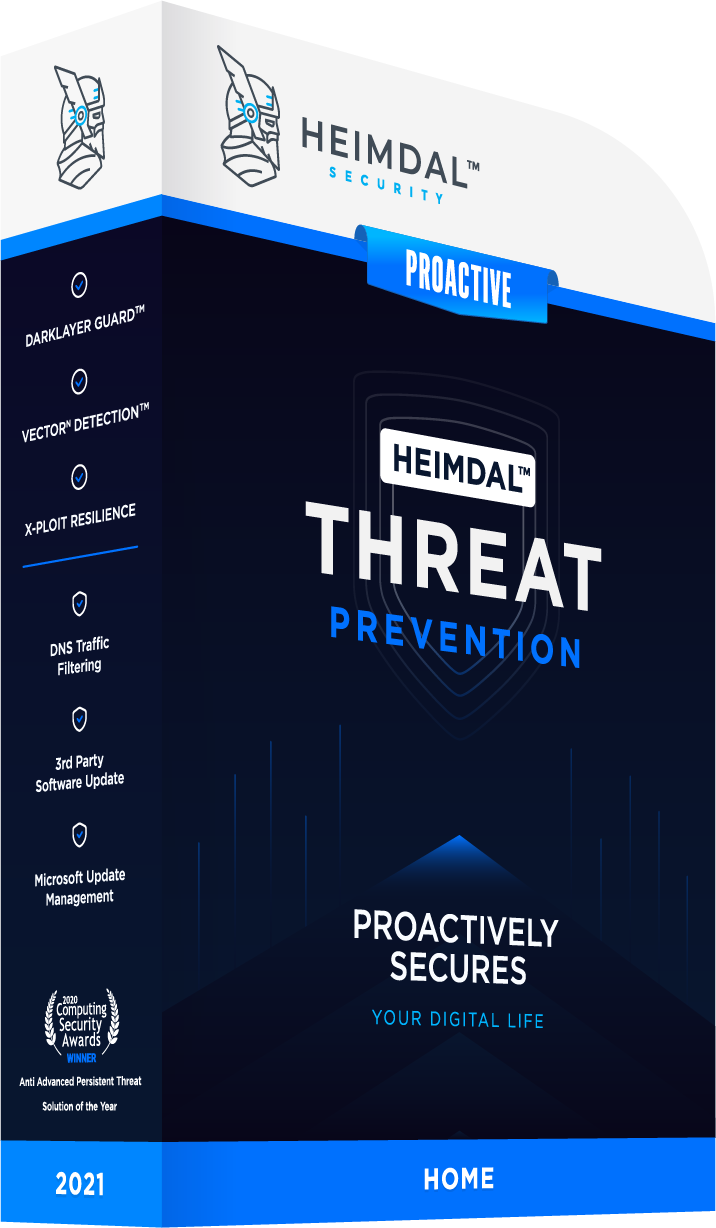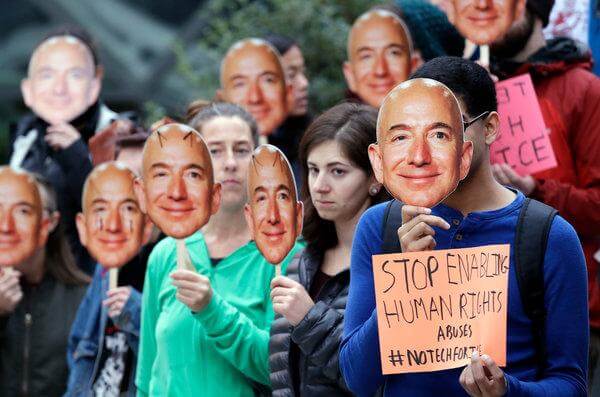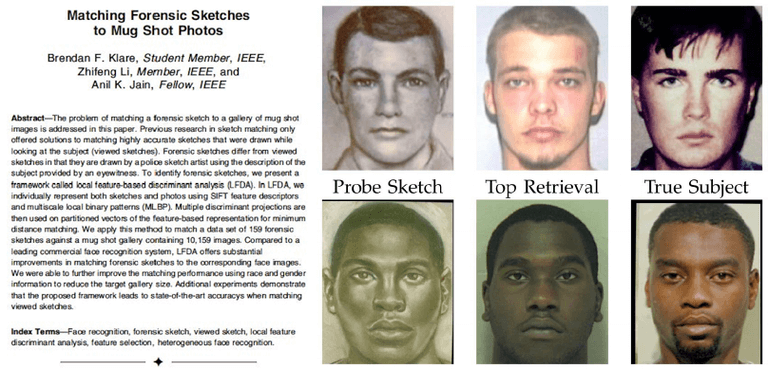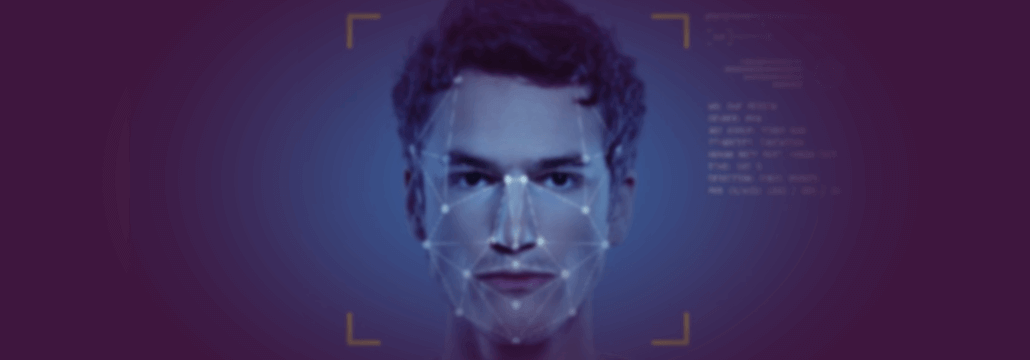Contents:
Facial recognition software is a relatively new technological development that is becoming adopted on a large scale by law enforcement agencies and national intelligence agencies worldwide.
Theoretically, the adoption of facial recognition software and other biometric identification methods could help identify attacks before they occur and generally lead to a faster capture of criminals. Practically, many citizens and digital privacy advocates are fighting back against the use of facial recognition software.
So why is facial recognition software such a charged topic?
To help anyone understand exactly why people don’t like it, I’ll first dive into the current debates surrounding it and on the main controversies about facial recognition software. Then, I’ll continue by explaining how the technology works and how you can confuse it or resist it.
While I wouldn’t encourage anyone to do anything illegal or resist legitimate info requirements made by public authorities, the truth is that facial recognition software is still, in many ways, a wild west. The laws are being debated and subject to change.
Innovators and authorities are still exploring what the technology can do and discover new functionalities. Meanwhile, the public tries to catch up and debate whether the functionality should be used in the first place.
Therefore, attempts to resist facial recognition software and to confuse it are a vital part of current negotiations and debates, in a new landscape where the right to a private life can’t be taken for granted anymore.
But before we dive in deep into the intricacies of facial recognition software, we need to look a bit to the history of developing facial recognition software.
A short history of facial recognition software:
- Mid-1960s: American mathematician Woodrow Wilson Bledsoe and his team develop a simple device which records facial features using a stylus and a tablet. His efforts helped pave the way towards modern facial recognition software and his intelligence team members are considered pioneers of AI and pattern recognition.
- Between the 1980s and 1990s: MIT, Rhode Island, and Brown University scientists develop the technology further, leading to Eigenfaces. Eigenfaces are two-dimensional facial structures generated through algebraic formulae. They laid the foundation for contemporary facial recognition software.
- After 2001: The 9/11 terrorist attacks highlighted the need to strengthen border security with better personal identification, via facial recognition software. This led to a wide-scale adaptation of this software, which continues to be improved to this day. Applications of the software were quickly picked up by the commercial sector as well (see below).
- 2005: The first personal phone with facial recognition software is unveiled at the Security Show Japan. The technology was named OKAO Vision Face Recognition Sensor and it was developed by the OMRON Corporation.
- 2005 – present: Facial recognition software is increasingly adopted by most smartphones but also perfected for the use of law enforcement and military groups. Machine learning and AI are employed for taking its accuracy to new heights and to vary its applications.
Why Is Facial Recognition Software So Debated Today?
As you can see, facial recognition software also has some consumer applications which are pretty popular (like the ones for smartphones).
Since security experts have long decried single-factor authentication (like security measures consisting only of passwords) as being too vulnerable to hacking (through credential stuffing attacks, for example), two-factor authentication is increasingly recommended and implemented. Some voices say even two-factor authentication is not as secure as previously thought.
In this context, methods of biometric authentication seem like a more secure way of accessing your accounts. Signing in with your face, your fingerprint, your iris scan or other bodily-related identity factors, which are (theoretically) accessible to no one buy you is the next level.
So why then are people against facial recognition software?
First and foremost, because facial recognition software started being employed in mass surveillance programs at nation-wide levels. People may not be against facial recognition software per se, but the way it started being used by law enforcement and state intelligence agencies are making most citizens uncomfortable.
Secondly, it’s not just the matter of privacy infringing: facial recognition software is also prone to errors and bias which cause people further discomfort.
Thirdly, as people become more educated in cybersecurity matters, with news of new data breaches making headlines every month, everyone is realizing that the safest bet is to have as little of your data collected as possible. If you allow devices to record even your most personal and private biometric data and store it for recognition and authentication, sooner or later the data might fall into the wrong hands.

There are other ways of being safe or employing multi-factor authentication methods; you don’t need to hand over your intimate bodily data. Besides, some biometric data is very easily faked by hackers just by seeing a photo of their victim where the hands are visible. In a famous case, a German minister’s fingerprints were replicated by hackers using just public photos.
Countries Which Are in the Spotlight for Facial Recognition Software
But the first reason for which people are outraged by facial recognition software lately is the way some public authorities started employing it. In the past half-year, some countries have been more under the spotlight for using facial recognition software in a way equated by people to a dystopian-like mass surveillance campaign.
These countries are:
#1. The US
In most American cities, unless explicitly banned due to public backlash and protests, police authorities have adopted the use of facial recognition software.
Since the technology behind facial recognition software is rather new and unprecedented, laws haven’t managed to catch up with it. Therefore, it’s still akin to the wild west: police are using the tech liberally and gathering as much data as they can, just thinking that it might be useful in the future or in order to train the programs to be more accurate.
As of 2016, it was estimated that 50% of the population was in the databases of police-owned facial recognition software, and that was 3 years ago.
If laws concerning the collection of private data without consent are in place, they are targeted at companies and advertisers, not at law enforcement. However, digital rights advocacy groups started speaking out against the rights of law enforcement to gather and make use of such data without a just reason. The following year will probably bring significant changes, one way or the other, as the matter is settled towards one pole or the other. More details on debates and protests below.
#2. The UK

“One Nation Under CCTV,” 2007 mural by Banksy (Flickr/ogglog).
In the UK, the use of facial recognition software by law enforcement seems to be even more pervasive than in the US, raising deeper concern over citizen rights and dystopian potential. To say that the use of this tech by police forces is contested would be an understatement.
First of all, as the use of this tech is yet unregulated, the police are apparently using it without permission. Privacy rights advocates such as the Big Brother Watch NGO are campaigning against the use, calling it unlawful and abusive towards privacy rights. Other studies report numerous ways in which surveillance via facial recognition software infringes on multiple citizen rights.
The UK police is also taken to court over its use of facial recognition software, in a first case. Until the matter is settled via legislation, more trials and protests will probably follow.
The fact that the use of the software is not even particularly effective doesn’t help improve its public perception either.
#3. China
China is facing an international outrage over its treatment of the Uighur minority in the Xinjiang region, who are under constant surveillance through various technological means, including facial recognition, voice recording and spying (even when not talking on the phone and so on). Chinese police forces even have smart glasses with built-in facial recognition systems, so the potential of the tech is very high.
#4. Germany
Germany tested out using facial recognition software for checking the people who cross through a train station, on the basis of volunteers and completely consensual ceding of biometric photos. However, it didn’t take long for privacy advocates to raise alarms. Considering the country’s history to mass surveillance by the government, I think the quick response, even if the trigger was ‘softer’ than the practices adopted by other countries, is a healthy exercise in democracy.
Other countries (less concerning cases):
Facial recognition software is also employed by law enforcement in the United Arab Emirates (for border control and such).
In Japan, the tech is being used for some controversial things like checking whether employees are smiling enough and so on, but since it’s not controversial in how police forces are using it, I won’t be including Japan in the list of really concerning countries.
Singapore, the tech capital of Asia, also employs facial recognition software widely for fast check-ins and such, but no reports of abuse have come through. Of course, it’s very possible that the West is experiencing more public protests about this kind of tech because of cultural differences and a greater awareness of privacy rights.
How People Are Fighting Back against Facial Recognition Software and Why
While for their part, law enforcement forces are defending their use of facial recognition software by highlighting the positive effects it has, people are not convinced.
Facial Recognition Software in the United States and the United Kingdom
In the US and UK, regular protests were held against the police use of facial recognition software without probable cause, as well as against storing the data obtained through this software without consent. If we look at some of the recent and non-recent protests, it’s pretty clear that many citizens see facial recognition software as having the potential to lead to a dystopian world. At least when it is in the hands of public forces, if not by default.
- In Washington, DC, people made a logo from the Eye of Sauron (from the Lord of the Rings trilogy) and the campaign message ‘Stop Watching Us, Sauron’ in order to protest surveillance;
- An NSA program which uses machine learning to identify probable terrorists has been dubbed Skynet, in a reference to the machine turned mad which ultimately takes control of humans in the Terminator series.
Recently, San Francisco registered a huge win in this fight. Due to citizen backlash, it became the first city to ban the use of facial recognition software by police and municipal authorities. Reports say that Oakland may soon follow in its trail.
New York Brooklyn tenants are protesting the plans of a landlord to install facial recognition software in their building. If the protest is successful, it will serve as a useful precedent to fight future potentially unethical uses of this software.
Facial Recognition Software in Other Parts of the World
In other parts of the world, like China, protests were obviously not held against this tech. Still, the Uighur minority is reportedly heavily controlled and persecuted with the help of this software. The Uighurs who manage to get away (usually to Turkey as a preferred asylum destination) are complaining about the all-controlling digital surveillance tech back home.
Protesting facial recognition software is not all political; there are also economic ways of sanctioning the use of technologies which are perceived as infringing people’s privacy.
Advocacy groups blend their efforts in order to exert pressure on big tech companies like Google and Microsoft in order to prevent them from selling facial recognition software to the government. Google agreed to the requests and said it will not release such software for now, until it finds good ways to ensure its ethical use.

Amazon protestors using printed masks of Jeff Bezos in order to condemn facial recognition software, via NYTimes.
Amazon acknowledged the tech’s potential for abuse but continued seeking partnerships with federal forces. As a result, it is now facing investor pressure in order to determine the company to stop selling facial recognition tech to law enforcement. Its employees are protesting it as well, though with little success so far. Luckily, investors stepped in to call an ethics check on the practice, with a greater potential of obtaining results.
Facial Recognition Software Criticism on Social Media
Regular citizens are also fighting the use of facial recognition software through social media shares of incidents they are subjected to. In the digital age, this disclosure can gain quite the traction.
Thanks to these small but significant ways to fight it, several new problems were revealed, beyond the privacy infringement and potential to lead to a totalitarian rule.
Apparently, facial recognition software can also be racist and gender biased.
Because it was fed biased photos (in the hunger of authorities to just push images into it indiscriminately, including celebrity photos and everything they could get their hands on from private citizens without consent), facial recognition software has trouble correctly identifying women and black people. Women of color are a particularly targeted category since they are subjected to a double bias.
Facial Recognition Software Tech Details: How It Works
Just like photo cameras were in a way designed to crudely imitate the human eye, so was facial recognition software emulated on the way people recognize faces.
1st Step: At least one picture of your face is captured by the software. It could be from public sources or from CCTV video, whatever.
2nd Step: The facial recognition software ‘reads’ the geometry of your skin. Then, it measures out proportional distances between the main features, the depth, 3D shapes and so on.
3rd Step: All this is compiled into a set of mathematical data – your face’s formula.
4th Step: This string of numbers is then compared to the database of millions of other faces captures. Then, the likeliest match is drawn.

Two examples of facial recognition software fails, via PopularMechanics.
This is the basic way it works. Is it accurate? Not really, several sources attest, but it does seem to get better and better thanks to more data being fed into it (with or without consent) and artificial intelligence algorithms.
How to Confuse Facial Recognition Software
The use of facial recognition software, even by law enforcement, is not yet regulated. Therefore, resisting it does not constitute a crime. Harsher climates may impose charges, but this only leads to greater publish backlash. A recent case of a UK man being fined after covering his face to elude facial recognition software has sparked an even more energetic opposition to police using this tech.
The interesting part is that since there are no laws yet regulating the use of facial recognition software (in the UK), not only resisting is not illegal, but the use of it (by police) is not yet legal, too.
Still, until the matters are settled and each country negotiates its own limits on the use of this controversial tech, it’s all a grey zone. While the issue is ambiguous, let’s take a look at how facial recognition software can be confused.
There are at least 3 ways, but it’s debatable for how long they will continue to work.
#1. Wear a partial mask:
The old cover-up method is by far the most effective, but in some places, it can get you in trouble. See the case of the fined UK man discussed above. Since you’re wearing a face mask, it’s pretty clear that you’re trying to hide your identity. Unfortunately, that can draw unwanted attention from the police.
#2. Wear special clothing items for confusing facial recognition software:
There are several clothing items with confusing patterns on them which were specially designed to confuse FRS. They try to prevent cameras using facial recognition software from being able to tell where your face is. For example, a pair of psychedelic glasses, or this scarf by Hyphen-Labs, or an anti-surveillance coat, or a baseball cap with projects tiny laser dots on your face invisible to the human eye but confusing for the software.

Anti-Face, the art project by CVDazzle.
#3. Wear irregular make-up designed for confusing facial recognition software:
Other creative ways to confuse facial recognition software is through make-up. The CVDazzle group has developed a series of looks which make your face untrackable, but their efforts aim to be a form of artistic protest and not a practical everyday solution for eluding recognition.
Positive Examples of Facial Recognition Software Applications
Since I want to maintain a non-biased overview of everything related to facial recognition software, I feel we should also note some of its applications which can make a positive difference in the world.
I won’t include crime prevention in the list, even though it is often brought up by authorities. They nominate it as the main reason for wide-spread employment of facial recognition software methods. I believe it may indeed have a positive impact on preventing or reducing crime. Still, I stand with those who believe individual freedom is more important than collective security.
Here are a few cool applications of facial recognition software:
- Finding missing people, especially vulnerable ones like children and victims of human trafficking;
- Finding lost pets – in this case, the ‘face’ tracked by the software is the missing pet’s;
- Identifying people in historical photographs: here’s a very cool project which helps identify people in old Civil War photos, effectively learning more about them and helping living persons identify ancestors;
- Helping the blind ‘see’ emotions in the people around them based on expression-recognition software: for example, a light phone vibration alerts a blind person to a smile.
Final Words
Facial recognition software, especially the advanced types used at the state level, are based on powerful machine learning technologies. Thus, unfortunately, even if you manage to successfully confuse it through creative means, the algorithms are bound to catch up and improve. Perhaps digital artists will be able to keep up and find new ways to confuse the software in a cat and mouse game, for a while.
But the real target of those concerned about facial recognition software should still remain the political debate and negotiation. The recent victory of citizens over local authorities in San Francisco has proved that solutions can be found. Where there’s a will, there’s always a way. Nonetheless, no one should ignore the positive aspects which may come from facial recognition software.
Still, being more careful about what data we share and with whom should be a must for all of us. How about you? Who logs into their cell phone with facial recognition?










 Network Security
Network Security
 Vulnerability Management
Vulnerability Management
 Privileged Access Management
Privileged Access Management  Endpoint Security
Endpoint Security
 Threat Hunting
Threat Hunting
 Unified Endpoint Management
Unified Endpoint Management
 Email & Collaboration Security
Email & Collaboration Security








